How to Make Bamboo Spoon and Fork
0Shares
They say the worst contributors waste in the world is using plastic. You can see how the plastic is killing our environment.
And one of the simplest ways that you can make difference is by saying ‘’no’’ to using plastic items. As well as by switching to some of the sustainable items. Using a bamboo spoon and fork at home is best alternatives than using the metal utensils. It is durable, functional, long lasting and extremely easy to use.
The idea of using a bamboo spoon and fork is better than plastic and metal. As it is eco-friendly and naturally free from toxins such as the BPA.
It is perfect and healthy to use for cooking, travel, and picnic.
There is no doubt, that many of you prefer to use the all-natural bamboo spoon and fork!
With that said, lot of you might also want to make your own bamboo spoon and fork at home.
In this article, I will teach you how to make bamboo spoon and fork. So, without further ado, let’s get started!

The Bamboo: Overview
The bamboo is one of the most popular fastest growing plants in the earth. As well as it is highly one of the sustainable plants. Bamboo is really a grass from the plant family known as ‘’Poacea’’ and develops effectively and generously in a few assortments. It is viewed as one of the quickest developing wood plants (grasses, really) on the planet!
In contrast to trees, and much like the grass you see on your yard, when sliced it keeps on developing. It quickly imitates the obvious bamboo posts or “culms” subsequent to being cut because of its solid and versatile underground arrangement of roots called rhizomes.
Bamboo shafts grow a normal gauge of 24 inches or more for each day. In light of the quick regrowth and life span of bamboo, its creation effectively removes the pressure from customary hardwood backwoods creation. Common hard such as, cedar take numerous years (up to 40) to deliver post size trees for cutting.
The bamboo takes a small amount of that time. Dispersing a bamboo plant really advances more advantageous development and 20 percent can be cut each year.
Bamboo is commonly connected with the tropics however it can develop in many atmospheres! With a quickly developing populace, the interest for wood made items places huge weight on our worldwide hardwood assets and furthermore exhausts regular untamed life territories. Bamboo gives a superior other option, allowing our lovely trees to remain unblemished.
Bamboo can develop to full measure in only 3-4 months, contrasted with standard trees which can take 30+ years to develop.
In the right conditions, it can grow 3 feet tall in 24 hours which implies you can actually watch it develop with your own eyes! This makes it an overly practical option because of its normally reestablishing properties.
In addition, frightful pesticides and synthetic substances aren’t required when collecting the bamboo. This implies the development is common, and never hurts the earth.
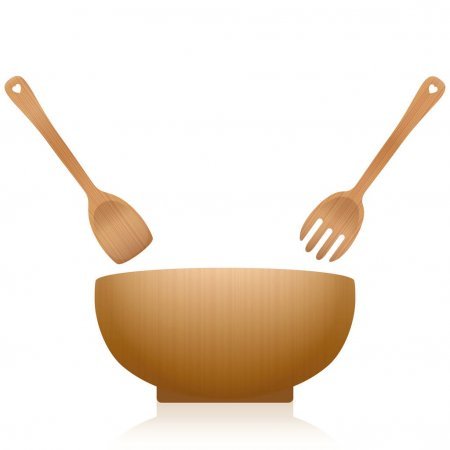
8 Reasons Why to Use Bamboo Spoon and Fork
Affordable
Bamboo utensils are cheap and could be the right option for individuals who are on a limited budget.
Environmentally Friendly
The earth benevolent highlights of bamboo are the fundamental motivation behind why bamboo kitchen utensils are getting amazingly well known and generally utilized among eco-cognizant people. Bamboo is actually a grass and can be cut without executing the plant.
At the point when you move grass it doesn’t kick the bucket it keeps on developing. This makes bamboo a profoundly inexhaustible, eco-accommodating asset. Bamboo becomes quicker than any wood and can be developed and reaped without the use of pesticides.
Lightweight
Bamboo things are practical and agreeable to utilize. Bamboo cooking gear and utensils are ideal for picnics, outdoors, and travel since they are light and 100% biodegradable.
Durable
Bamboo utensils are amazingly solid and tough. The Bamboo is shockingly solid yet at the same time light and adaptable. Bamboo utensils are dependable and more solid than wooden and plastic ones.
Stain and Odor Resistant
Bamboo is warmth, stain, and water-safe material. Bamboo items don’t assimilate scents and they are exceptionally simple to clean.
Smooth Finish
Bamboo kitchen utensils have a smooth completion and won’t get an unpleasant or permeable surface following a couple of long stretches of use.
Attractive Appearance
Bamboo kitchen devices include a new, common touch to any kitchen. They would make the ideal present for weddings, showers, and housewarmings.
Safe with Non-Stick Cooking Surfaces
Bamboo cooking utensils won’t scratch the non-stick finish on your skillet, and won’t hurt your best cookware.
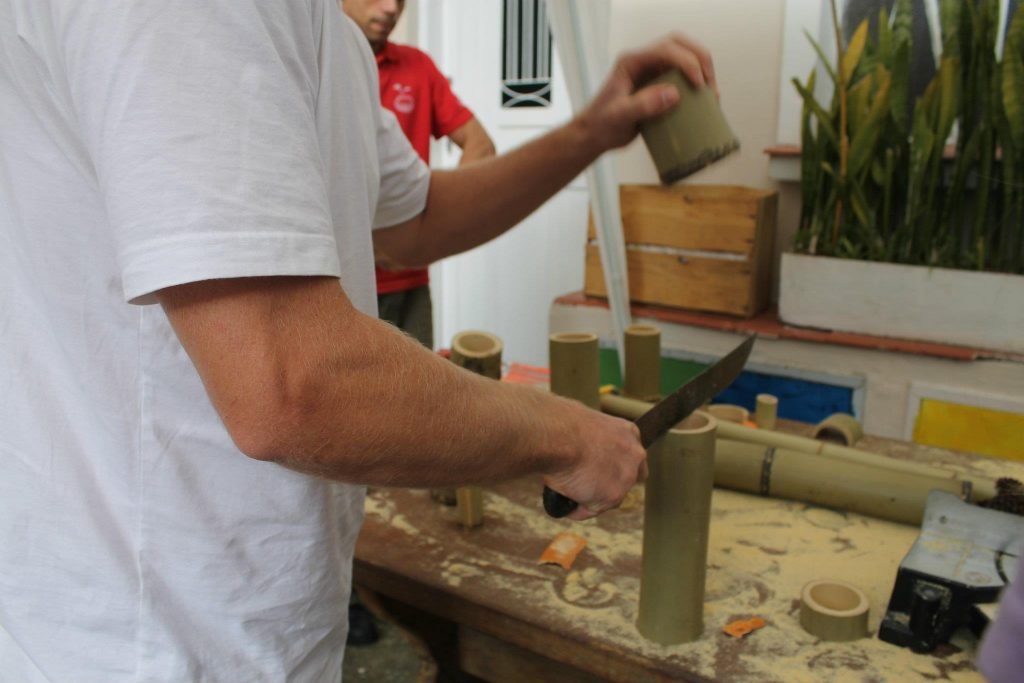
HOW TO MAKE BAMBOO SPOON AND FORK
GET THE BAMBOO
The first step in making your spoon and fork is of course getting the main materials which is the bamboo.
Go in the jungle or forest and get some bamboo using your handsaw.
GATHER ALL THE TOOLS NEEDED
Before you start making the bamboo spoon and fork you will need some tools such as;
- Handsaw
- Bolo Knife
- Bandsaw
- Sandpaper
- Pencil
Other tools you can use:
- Spokeshave
- Gouge
- Straight knife
- Hook Knife
Make sure to have those tools needed as it needed. Though you can also use some of the tools you have that can help you with the procedure. But don’t worry you don’t need to have the exact tools as it is quick and easy to do in hands.
TRACE AND CUT THE BAMBOO
Once you get those bamboos, you will need to cut the bamboo edges using the bolo knife. Clip it to the bench vise and cut it for better outline cutting. Just cut it in small slabs of around 5 cm wide and 40 cm long. After you outline the 2 pieces slab with the pencil, proceed to cut them using your bandsaw. The outside of the spoon is mostly done with bandsaw.
Nonetheless, in the spoon scoop part you can use the gauge for better carving and shaping.
SAND AND CARVE THE BAMBOO FORK AND SPOON
You’re getting close! Sand it by your hand with sandpaper or you can use the mechanical hand-polisher. After that, you can carve both of the fork and spoon.
Just keep in mind that, you can have a hand ache, sanded it by your hand was not easy. The process will take a lot of time and has to be done really carefully.
FINALIZE THE SHAPE
Obviously, this is not just about the rough shaping. As this part will take a lot of time and practices. So, you just need to be prepared to moderately increase your skill level. Once you are satisfied with the texture and shape. That’s the time you can proceed on to the rest of the final shaping.
ENJOY YOUR BAMBOO SPOON AND FORK!
Finally, once your bamboo spoon and fork were cut and sanded, you’re already done!
On the other hand, you need to boil the spoon and fork in the water with vinegar. When the spoon and fork is dry coat them with a coconut oil which makes them shiny, soft and waterproof.
Recommended:
Totally Bamboo 3-Piece Bamboo Flatware Set
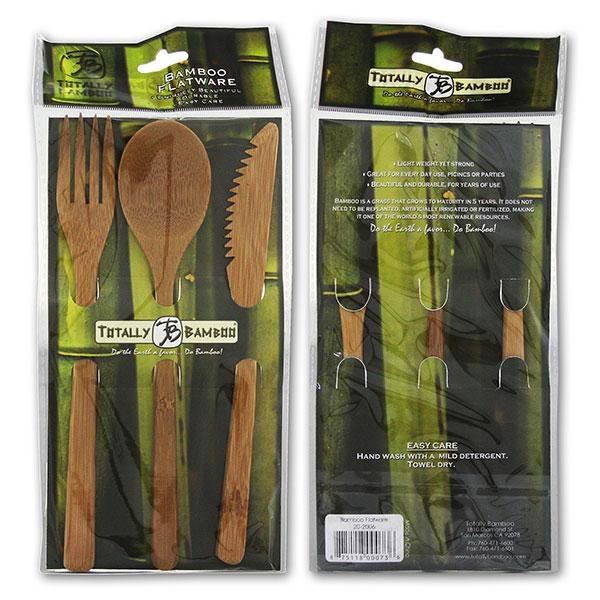
The perfect set includes a knife, spoon and fork that are entirely made of bamboo! The coolest set for a Travel or Picnic.
Bambaw Bamboo Cutlery Set

The comfort of expendable plastic items has made a ‘disposable culture’ that spreads to each side of the world. Single-use plastic cutlery is probably the most elevated supporter of plastic contamination. These incredible set is a reasonable answer for developing the issue as they are sufficiently lightweight to be taken any place. As well as durable to continue use.
To-Go Ware Bamboo Travel Utensils with Carrying Case
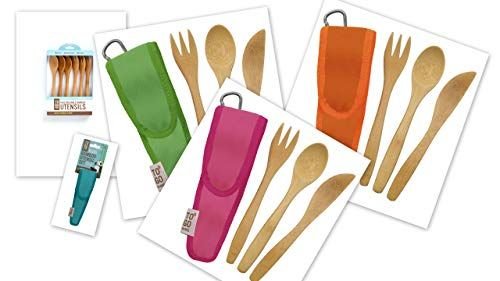
Set balances out of your toolbox for a waste-free life in hurry. Enjoy and be healthy as always by eating with utensils made of bamboo, a sustainable resource and highly durable set. Includes a chopstick, blade, fork and spoon.
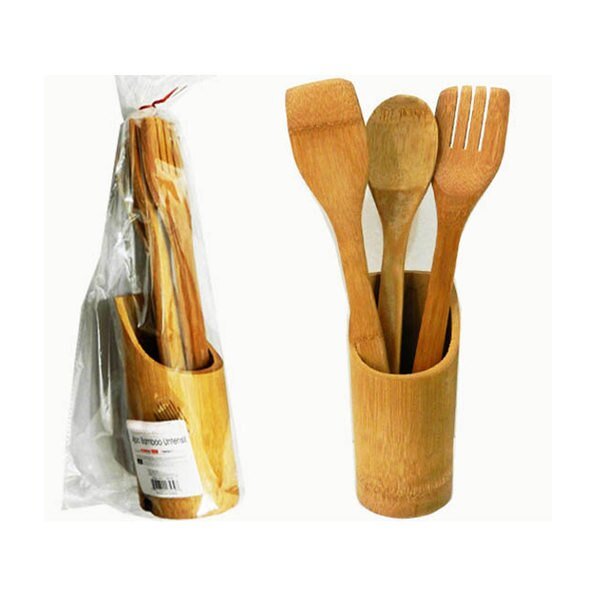
5 Tips on How to Care Bamboo Utensils
Bamboo is immediately recharged resources. As one of the Earth’s fastest-growing plants, it shouldn’t be replanted and develops without pesticides and composts. Bamboo isn’t wood, yet it is as hard as wood while being as lightweight as the grass it seems to be. It tends to be utilized a lot of like wood for ground surface, cutting sheets, framing and cooking and eating utensils. Bamboo utensils are easy to think about.
- Wash your bamboo utensils using with hot, sudsy water. Try not to absorb the water and don’t place them in a dishwasher. Keep from drying on the utensils by cleaning them immediately. If the food gets stuck on, tenderly scratch it away with a metal scrubber, spread blade or your fingernail. A delicate scour cushion can likewise be utilized.
- Sterilize your bamboo utensils in the event that they come into contact with crude meat, poultry or fish. A sanitizer and water arrangement of one tbsp. of chlorine blanch in one quart of water will work, as will three tbsp. of white vinegar per cup of water.
- Dry your bamboo utensils subsequent to cleaning with a perfect, dry towel, as opposed to letting them air dry.
- Apply oil to your utensils regularly, especially in the wake of sterilizing, utilizing a spotless, dry fabric. Use nourishment grade mineral oil to keep your utensils very much molded. Without oil, bamboo can fragment or split with rehashed use and washings. Mineral oil is boring and unscented.
- Store your utensils in a dry spot away from outrageous temperatures that can cause breaking and parting.
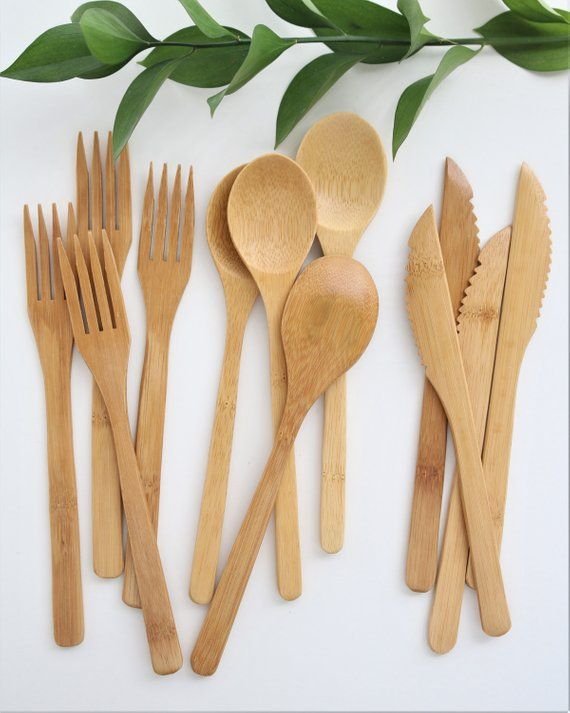
4 Tips on How to Oil Bamboo Utensils
- Pick a nourishment safe mineral oil. Try not to utilize cooking oils, as some of them can go rank.
- Ensure that the devices are dry and clean before you begin applying the oil.
- Use a liberal measure of oil and apply with a perfect, dry material. Apply the oil equitably everywhere throughout the things, not simply a few sections.
- Air dry for the time being and wash before the following use.

Most Ideal Way to Clean Bamboo Utensils
While placing bamboo in the dishwasher isn’t prompted as a rule, it doesn’t imply that cleaning it is confounded.
Bamboo utensils, bowls, sheets etc., need to be hand-washed after use. Take a wipe or material and wash it with heated water and cleanser. At that point let it air dry before putting away.
Maintain a strategic distance from rough cleaners and instruments when cleaning and don’t splash bamboo. Whenever inundated in water for quite a while it can expand up and split equivalent to wood would.
If you need to purify your bamboo devices in the wake of utilizing them with crude meat, an answer of 1 section vinegar and 4 sections water will work. Wash it with the solutions of, at that point pat dry.
Is Bamboo Antibacterial?
Many contend that plastic is more secure on the grounds that it very well may be gotten through dishwasher and will withstand high water temperatures.
The issue with plastic is that it’s anything but difficult to scratch and cut it. Water and microorganisms will cover up into the cuts and will increase quick.
Bamboo and wood dissipate the overabundance water and have normally antimicrobial properties that eliminate microbes, regardless of whether they figure out how to cover up in certain cuts in the surface.
There are not excessively huge numbers of the slices for microbes to remain in isolation at any rate since bamboo is an extremely solid material that scratches negligibly.
If you oil it all the time, at that point it turns out to be considerably more hygienic in light of the fact that the oil fills the splits and there is a bad situation for microorganisms to cover up.
Fun Fact: There was a contextual investigation that found that utilizing plastic cutting sheets multiplied odds of contracting salmonella. In any case, the individuals using wood slicing boards that are like bamboo were half as likely of contracting it as the overall population.
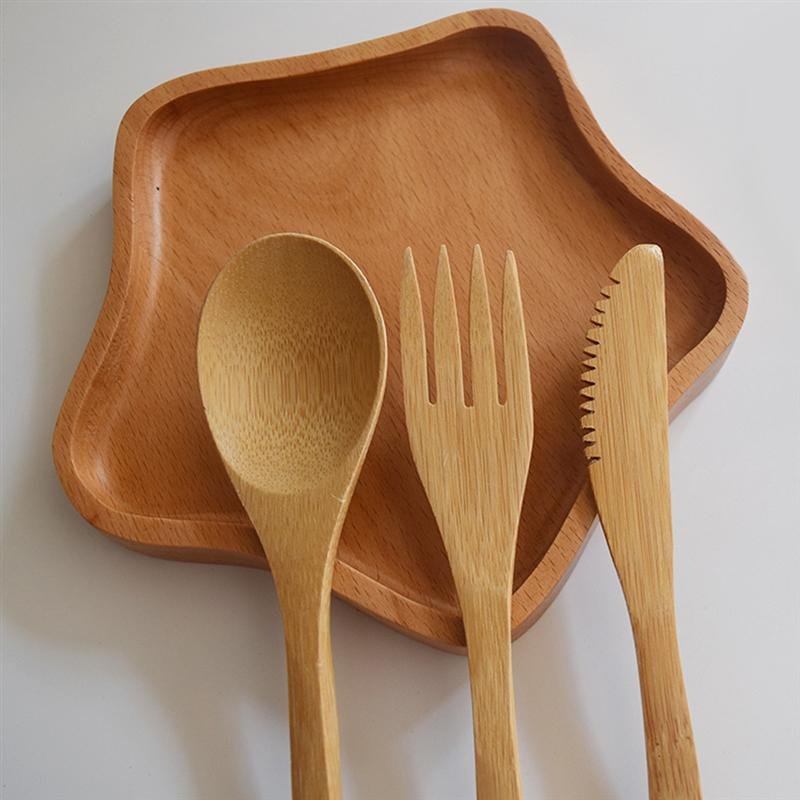
Conclusions:
Making bamboo fork and spoon is both exciting and challenging. It is easy to do but takes a lot of time and patience especially in carving and sanding it with hands.
Just be patience and make sure you have the skills in using some of the tools.
Hopefully, our article helps you make your own bamboo spoon and fork! Enjoy and Happy Eating!
CHECK OUT: Where to Buy Bamboo Plates.
0Shares
